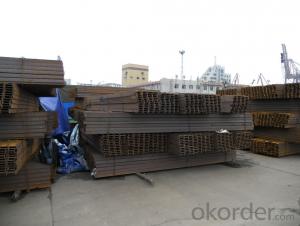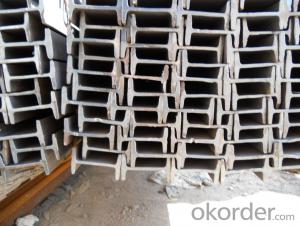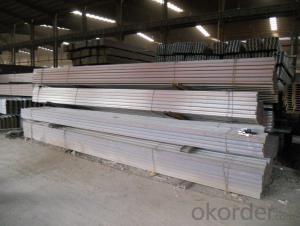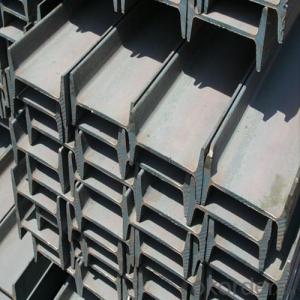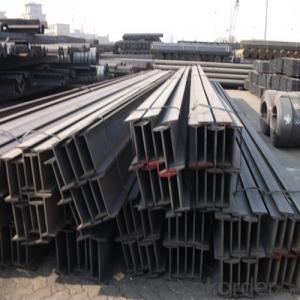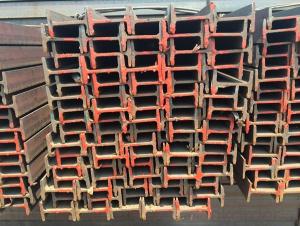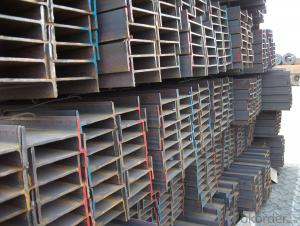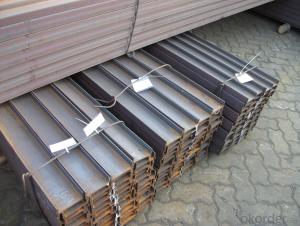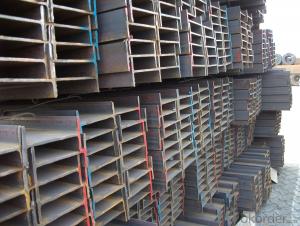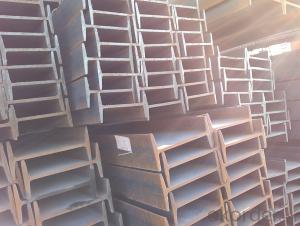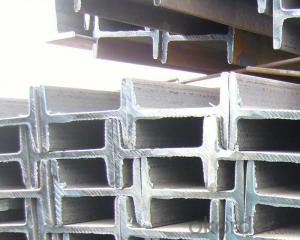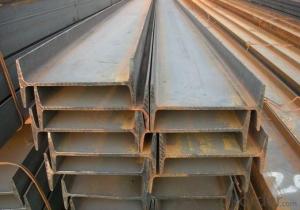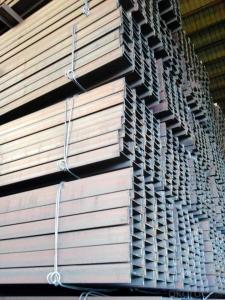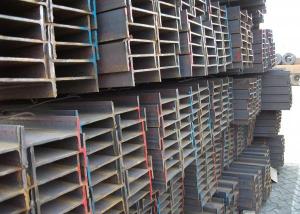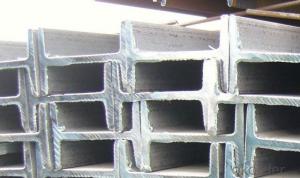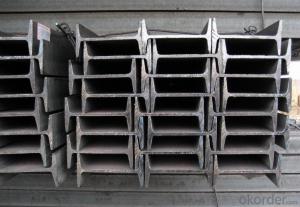IPEAA, IPE Steel Beams
- Loading Port:
- Tianjin
- Payment Terms:
- TT OR LC
- Min Order Qty:
- -
- Supply Capability:
- 100000 m.t./month
OKorder Service Pledge
OKorder Financial Service
You Might Also Like
Specifications of IPE/IPEAA Beam Steel
1. Product name: IPE/IPEAA Beam Steel
2. Standard: EN10025, GB Standard, ASTM, JIS etc.
3. Grade: Q235B, A36, S235JR, Q345, SS400 or other equivalent.
4. Length: 5.8M, 6M, 9M, 10M, 12M or as your requirements
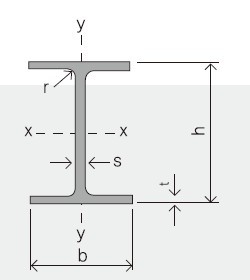
Section | Standard Sectional Dimensions(mm) | ||||
| h | b | s | t | Mass Kg/m |
IPE80 | 80 | 46 | 3.80 | 5.20 | 6.00 |
IPE100 | 100 | 55 | 4.10 | 5.70 | 8.10 |
IPE120 | 120 | 64 | 4.80 | 6.30 | 10.40 |
IPE140 | 140 | 73 | 4.70 | 6.90 | 12.90 |
IPE160 | 160 | 82 | 5.00 | 7.40 | 15.80 |
IPE180 | 180 | 91 | 5.30 | 8.00 | 18.80 |
IPE200 | 200 | 100 | 5.60 | 8.50 | 22.40 |
IPE220 | 220 | 110 | 5.90 | 9.20 | 26.20 |
IPE240 | 240 | 120 | 6.20 | 9.80 | 30.70 |
IPE270 | 270 | 135 | 6.60 | 10.20 | 36.10 |
IPEAA80 | 80 | 46 | 3.20 | 4.20 | 4.95 |
IPEAA100 | 100 | 55 | 3.60 | 4.50 | 6.72 |
IPEAA120 | 120 | 64 | 3.80 | 4.80 | 8.36 |
IPEAA140 | 140 | 73 | 3.80 | 5.20 | 10.05 |
IPEAA160 | 160 | 82 | 4.00 | 5.60 | 12.31 |
IPEAA180 | 180 | 91 | 4.30 | 6.50 | 15.40 |
IPEAA200 | 200 | 100 | 4.50 | 6.70 | 17.95 |
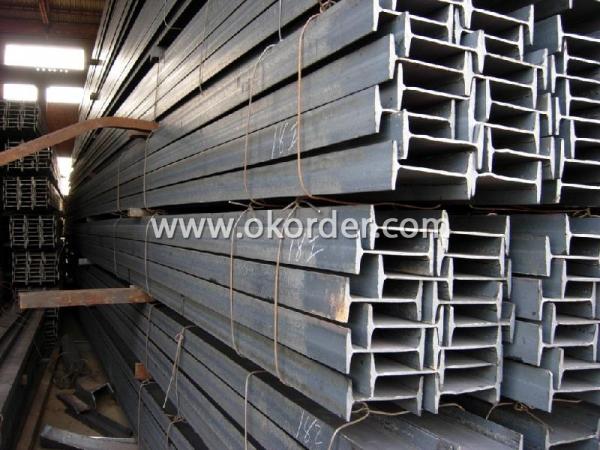
Applications of IPE/IPEAA Beam Steel
IPE/IPEAA Beam Steel are widely used in various construction structures, bridges, autos, brackets, mechanisms and so on.
Packing & Delivery Terms of IPE/IPEAA Beam Steel
1. Package: All the IPE/IPEAA Beam Steel will be tired by wire rod in bundles
2. Bundle weight: not more than 3.5MT for bulk vessel; less than 3 MT for container load
3. Marks:
Color marking: There will be color marking on both end of the bundle for the cargo delivered by bulk vessel. That makes it easily to distinguish at the destination port.
Tag mark: there will be tag mark tied up on the bundles. The information usually including supplier logo and name, product name, made in China, shipping marks and other information request by the customer.
If loading by container the marking is not needed, but we will prepare it as customer request.
4. Shipment: In containers or in bulk cargo
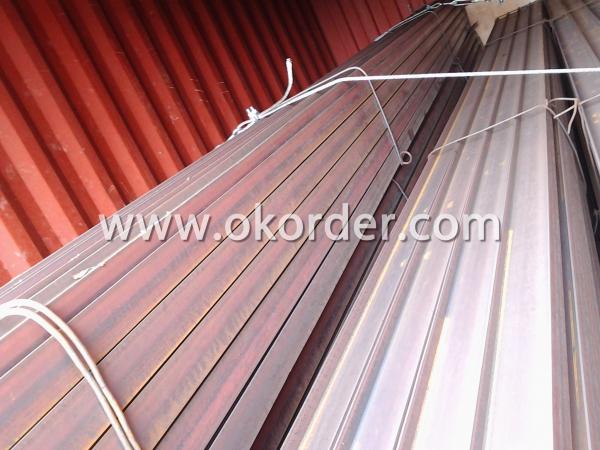
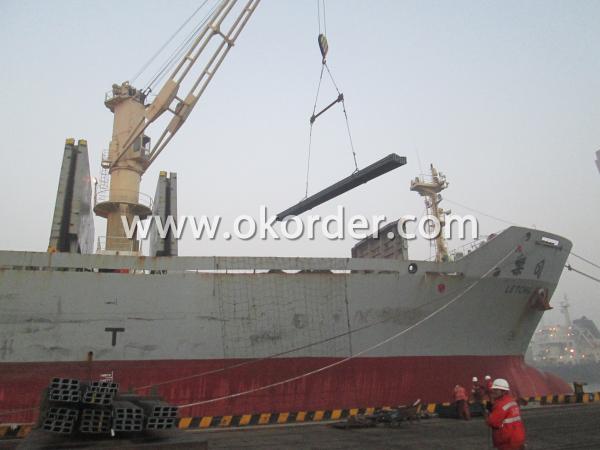
5. Delivery time: All the IPE/IPEAA Beam Steel will be at the port of the shipment within 45 days after receiving the L/C at sight ot the advance pyment.
6. Payment: L/C at sight; 30% advance payment before production, 70% before shipment by T/T, etc.
Production flow of IPE/IPEAA Beams
Material prepare (billet) —heat up—rough rolling—precision rolling—cooling—packing—storage and transportation
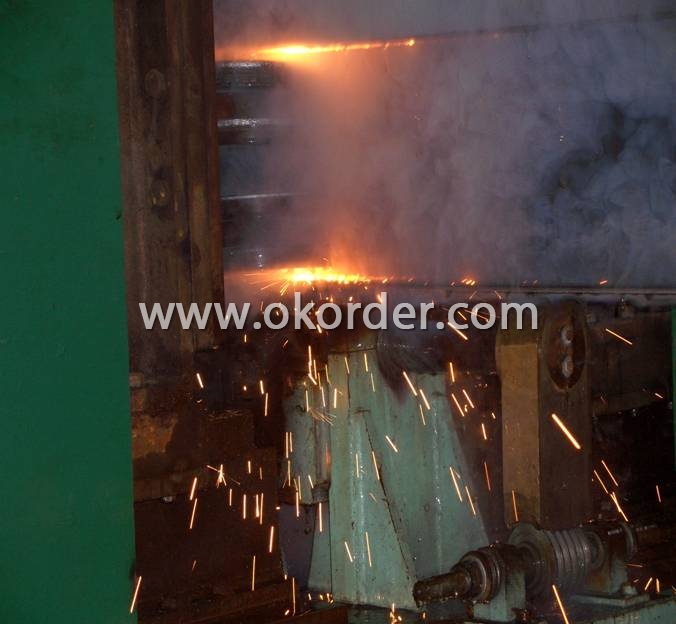
- Q: What are the typical costs associated with steel I-beams?
- The typical costs associated with steel I-beams can vary depending on factors such as the size, length, and grade of the beam, as well as market conditions. However, on average, the cost can range from $200 to $2,500 per beam.
- Q: Are steel I-beams resistant to lightning strikes?
- Lightning strikes can occur on steel I-beams despite their conductivity. Despite steel being a good conductor, it does not guarantee immunity against lightning strikes. Lightning, a powerful natural phenomenon, can strike any structure made of steel. However, the risk of damage or fire caused by lightning can be reduced by implementing appropriate lightning protection measures. These measures typically involve the use of lightning rods, grounding systems, and surge protectors, which safely redirect the electrical charge to the ground, minimizing potential harm. It is crucial to seek advice from a professional engineer or lightning protection specialist to ensure that adequate measures are in place to safeguard structures, including steel I-beams, from lightning strikes.
- Q: How do steel I-beams compare to fiberglass I-beams in terms of strength and durability?
- Comparatively, steel I-beams are renowned for their robustness and longevity when compared to fiberglass I-beams. The inherent strength of steel surpasses that of fiberglass, allowing steel I-beams to effortlessly bear hefty loads and endure higher levels of stress without succumbing to deformation or breakage. Moreover, steel exhibits superior resistance to fire, extreme temperatures, and chemicals, further enhancing its durability. In contrast, fiberglass I-beams possess a lighter weight and greater flexibility in comparison to their steel counterparts. These characteristics render them suitable for specific applications that prioritize weight considerations or necessitate flexibility. Furthermore, fiberglass I-beams possess exceptional corrosion resistance, making them an ideal choice for environments exposed to chemicals or moisture. Although fiberglass I-beams may serve as a cost-effective and corrosion-resistant substitute for steel in certain situations, they fail to match the strength and durability of steel I-beams in heavy-duty applications. Steel I-beams find common usage in construction endeavors demanding high load-bearing capacities, such as skyscrapers, bridges, and industrial structures. In such scenarios, the unparalleled strength and durability of steel make it the preferred option.
- Q: How do steel I-beams contribute to the overall flexibility of a structure?
- Steel I-beams contribute to the overall flexibility of a structure by providing strength, stability, and support. Due to their shape and design, I-beams distribute the load evenly across their length, allowing for longer spans without the need for additional support columns. This flexibility in design enables architects and engineers to create open and versatile spaces, accommodating various layouts and functional requirements. Additionally, the use of steel I-beams allows for the construction of taller structures, as they can withstand vertical and horizontal loads, such as wind or seismic forces, while maintaining the desired level of flexibility.
- Q: Can steel I-beams be used in elevated walkway construction?
- Indeed, elevated walkway construction can incorporate steel I-beams. Steel I-beams prove to be a popular choice in construction endeavors owing to their robustness, resilience, and adaptability. Their outstanding capability to bear loads makes them well-suited for supporting the weight of elevated walkways. Furthermore, steel I-beams can be tailored in terms of length and size, allowing for personalized designs and streamlined installation procedures. By utilizing steel I-beams in elevated walkway construction, a secure and dependable structure is ensured for pedestrians to traverse upon.
- Q: How do steel I-beams perform in terms of fire safety?
- Steel I-beams perform well in terms of fire safety due to their inherent fire-resistant properties. Steel has a high melting point, which makes it less susceptible to structural failure during a fire. Additionally, steel I-beams do not contribute to the spread of fire as they do not burn or release toxic gases. However, prolonged exposure to high temperatures can weaken steel, so proper fire protection measures such as fire-resistant coatings or insulation are necessary to maintain their structural integrity in a fire.
- Q: Can steel I-beams be used in curved applications?
- Indeed, curved applications can utilize steel I-beams. Although traditionally limited to straight spans and linear structures, I-beams possess the versatility to be incorporated into curved designs as well. The process of curving steel I-beams involves bending them to the desired radius or curvature, which can be accomplished through a range of techniques like hot or cold bending. Architects and engineers commonly employ curved steel I-beams in both architectural and structural designs, particularly when aiming for curved or arched elements. These beams offer a combination of strength, durability, and the opportunity for innovative and visually appealing designs. Nonetheless, it is crucial to consult with structural engineers and experts to ensure that the curved I-beams meet all necessary load-bearing requirements and structural considerations.
- Q: Can steel I-beams be used in marine environments?
- Yes, steel I-beams can be used in marine environments. Steel is a popular material choice for marine applications due to its high strength, durability, and resistance to corrosion. However, it is important to consider certain factors when using steel I-beams in marine environments. One of the main concerns in marine environments is the risk of corrosion. Steel I-beams are typically coated with protective layers such as paint or galvanization to prevent corrosion. These protective coatings create a barrier between the steel and the corrosive elements present in the marine environment, such as saltwater and humidity. Additionally, the design of steel I-beams for marine applications should take into account factors such as wave forces, water pressure, and potential impacts from floating objects. Reinforcements and additional bracing may be required to ensure the structural integrity and stability of the I-beams in these challenging conditions. Regular inspection and maintenance are also crucial to ensure the longevity of steel I-beams in marine environments. Inspections should include checking for any signs of corrosion, damage to the protective coatings, or structural issues. Prompt repairs or replacements should be carried out if any issues are identified. Overall, steel I-beams can be effectively used in marine environments when the appropriate protective coatings, design considerations, and maintenance practices are implemented.
- Q: Can Steel I-Beams be painted or coated for corrosion protection?
- Steel I-beams can undergo painting or coating in order to protect against corrosion. This is a common practice to increase their durability and prevent deterioration. The application of paint or coating serves as a safeguarding layer, shielding the steel surface from moisture, chemicals, and other corrosive elements. This aids in extending the lifespan of the I-beams and preserving their structural integrity. Furthermore, the paint or coating also offers the advantage of allowing customization through various colors or finishes, enhancing the aesthetic appeal. It is crucial to ensure the use of appropriate painting or coating materials, as different types may offer varying degrees of protection and compatibility with steel surfaces.
- Q: Can steel I-beams be used in historical preservation or restoration projects?
- Yes, steel I-beams can be used in historical preservation or restoration projects. However, it is important to ensure that their use aligns with the historical significance and aesthetic of the building or structure being preserved. In some cases, steel I-beams can be concealed or integrated in a way that maintains the architectural integrity of the historical structure.
Send your message to us
IPEAA, IPE Steel Beams
- Loading Port:
- Tianjin
- Payment Terms:
- TT OR LC
- Min Order Qty:
- -
- Supply Capability:
- 100000 m.t./month
OKorder Service Pledge
OKorder Financial Service
Similar products
Hot products
Hot Searches
Related keywords
